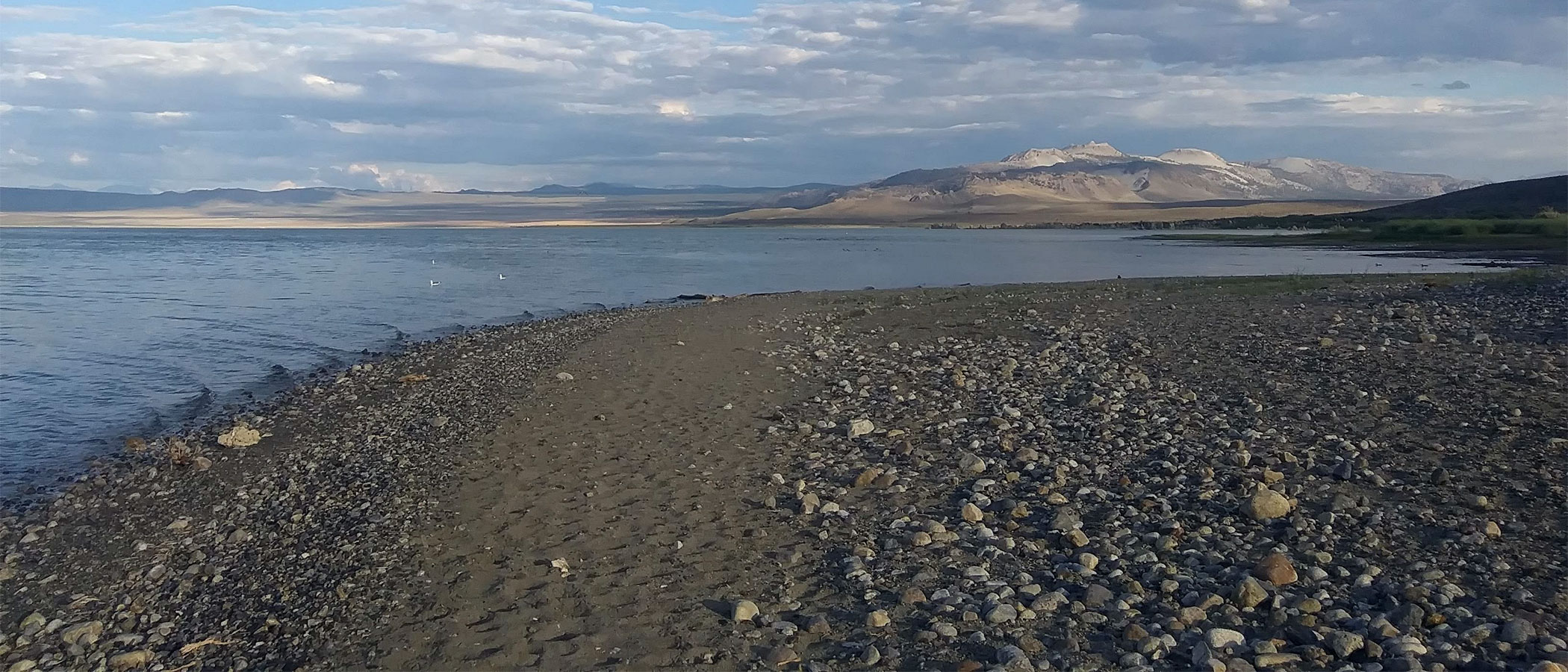
Mono Lake is known for its shorebirds—flocks of dainty phalaropes awe us as they fly amongst the tufa, striking black-and-white avocets congregate at the County Park boardwalk, and sandpipers forage on recently exposed mudflats. Even at its unnaturally low level, Mono Lake is a huge lake, and shorebird numbers and distribution here are poorly understood. Full surveys hadn’t been completed on the lake since 2008, and as the climate changes and lake levels fluctuate, understanding how shorebirds use and depend on this unique saline lake is more important than ever.
On August 15, 2022, the Mono Lake Committee partnered with Oikonos Ecosystem Knowledge, the Eastern Sierra Audubon Society, and Point Blue Conservation Science to conduct a lake-wide shorebird survey of Mono Lake. This survey is part of the much larger Migratory Shorebird Project, which includes hundreds of lakes across the globe. Here at Mono Lake, 23 participants walked all 45 miles of shoreline and 3–5 miles of island shorelines were covered by boat. Throughout the day we counted more than 26,000 individual shorebirds of 20 different species (see below for the tally).
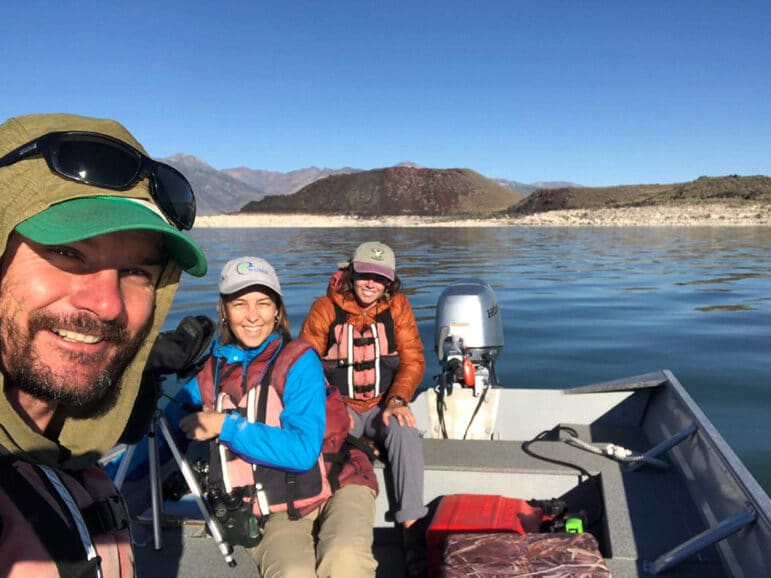
My survey section was from the Wilson delta to the end of Danburg Beach near County Park. I started the morning early and hiked 1.5 miles to my survey starting point. When I first reached the shore, I was overwhelmed—hundreds of phalaropes and avocets darted in and out of the tufa shoals, making it a challenge to count them. I spent almost an hour in the first quarter-mile, scanning back and forth and recounting with my binoculars and spotting scope. Luckily, as I progressed there was less tufa and it was easier to count the shorebirds.
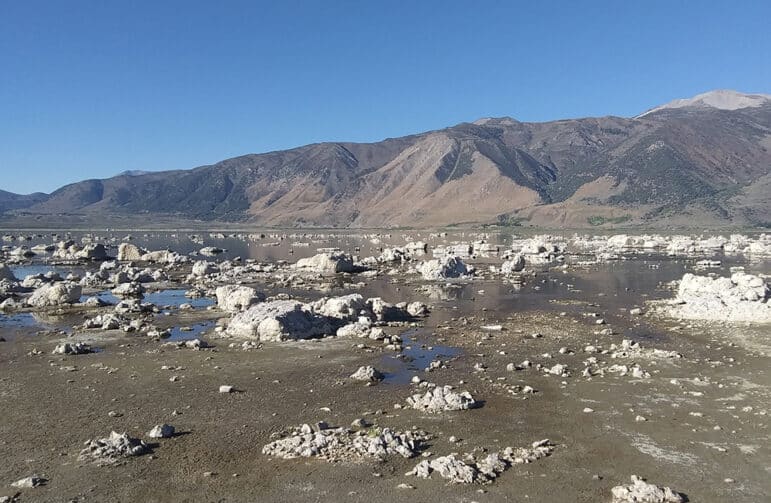
My next challenge was the increasingly wet mud near the delta. I brought water shoes, but made the mistake of thinking I could wait until after a small stream crossing to change into them. What looked like solid ground turned out to be very soft mud, which almost successfully ate my shoe! After digging it out, I had to officially change into water shoes and let the waterlogged and very muddy hiking shoe dry out on the back of my backpack.
The Mill Creek delta was much less eventful mud-wise (having already changed into water shoes), but did turn up 7 large shorebirds that are some of my favorite all-time birds: Long-billed Curlews. These massive shorebirds have disproportionately long, down-curved bills and a beautiful mottled brown plumage. The remaining stretch to Danburg Beach was relatively rocky and yielded only a handful of Spotted Sandpipers, Killdeer, and phalaropes.
I walked back to my car and surveyed DeChaumbeau and County ponds before heading back to the office, excited to see what others had found. Just before driving back, I saw a text from Nora that she’d seen lots of Snowy Plovers, a federally threatened small wader, and I smiled. A day out looking at birds is always a good day, but being part of this multi-organization effort to understand lake-wide shorebird distribution was just beyond cool.
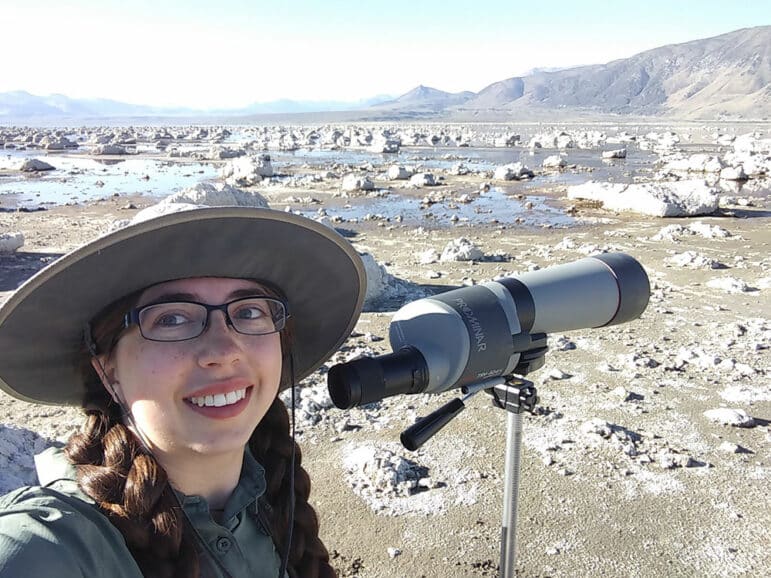
Many of the species we survey are migratory and depend on Mono Lake’s abundant brine shrimp and alkali flies to fuel them on their journey to their wintering grounds thousands of miles away. It’s truly mind-boggling that the little Wilson’s Phalaropes we meticulously counted spinning in the water and jabbing the air for flies will soon be 3,000 miles away, keeping company with flamingos in South America. Even the larger American Avocets travel as far as southern Mexico and Guatemala, and petite Least Sandpipers, the world’s smallest shorebird (at just 1 ounce and 5–6 inches long), winter throughout the southern United States all the way south to South America. Inland lakes like Mono Lake are rare and increasingly threatened by drought, water diversions, and climate change, making the protection of this migratory staging site crucial for these species’ survival.
We hope to continue having these lake-wide surveys every spring and fall for several years to improve our understanding of how shorebirds use this lake. If you’re in the area and have an interest in birds and science, we’d love to have you join our team! Contact Lead Naturalist Guide Nora Livingston by email or at (760) 647-6595 x135 for more information about how to be involved.
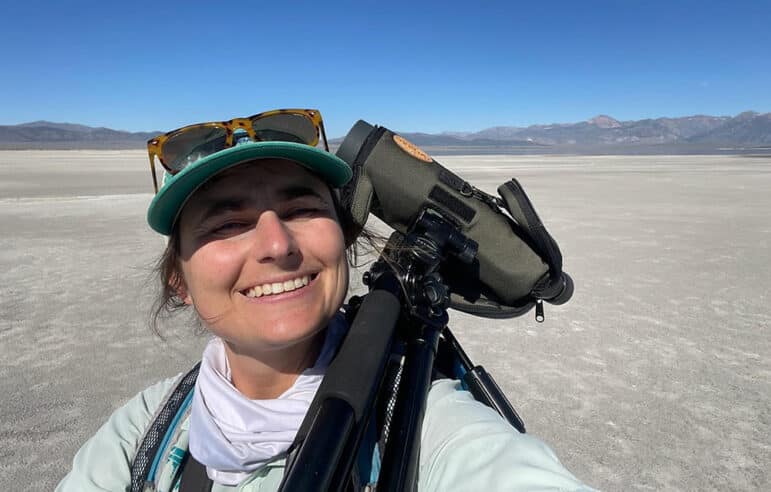
In the meantime, wherever you are, next time you see a long-legged wading bird, try to imagine its journey, and where it might end up. The world’s ecosystems are all interconnected, and you never know if that little shorebird you saw might end up continents away, or even here at Mono Lake.
Species list and rough tally
| Killdeer | 144 |
| Snowy Plover | 91 |
| Semipalmated Plover | 21 |
| Black-necked Stilt | 4 |
| American Avocet | 4703 |
| Marbled Godwit | 1 |
| Long-Billed Curlew | 44 |
| Greater Yellowlegs | 1 |
| Lesser Yellowlegs | 1 |
| Spotted Sandpiper | 45 |
| Least Sandpiper | 563 |
| Western Sandpiper | 636 |
| Western/Least | 61 |
| Peep sp. | 90 |
| Pectoral Sandpiper | 6 |
| Baird’s Sandpiper | 12 |
| Long-billed/Short-billed Dowitcher | 8 |
| Wilson’s Phalarope | 3671 |
| Red-Necked Phalarope | 13180 |
| Phalarope Sp. | 3536 |
| White-Faced Ibis | 6 |
| Sanderling | 1 |
| Willet | 2 |
Top photo by Emma Rosen.
